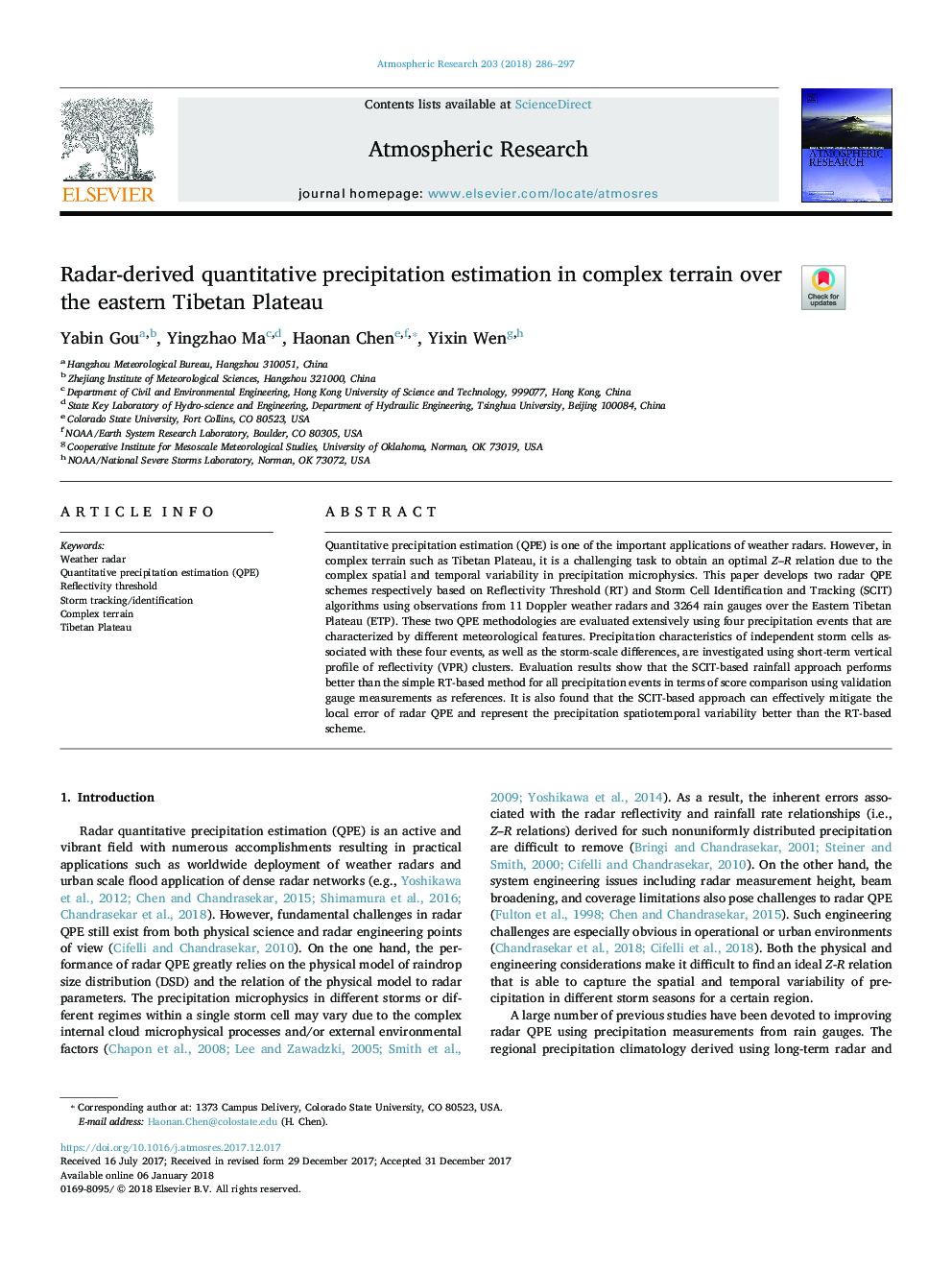| Article ID | Journal | Published Year | Pages | File Type |
|---|---|---|---|---|
| 8864778 | Atmospheric Research | 2018 | 12 Pages |
Abstract
Quantitative precipitation estimation (QPE) is one of the important applications of weather radars. However, in complex terrain such as Tibetan Plateau, it is a challenging task to obtain an optimal Z-R relation due to the complex spatial and temporal variability in precipitation microphysics. This paper develops two radar QPE schemes respectively based on Reflectivity Threshold (RT) and Storm Cell Identification and Tracking (SCIT) algorithms using observations from 11 Doppler weather radars and 3264 rain gauges over the Eastern Tibetan Plateau (ETP). These two QPE methodologies are evaluated extensively using four precipitation events that are characterized by different meteorological features. Precipitation characteristics of independent storm cells associated with these four events, as well as the storm-scale differences, are investigated using short-term vertical profile of reflectivity (VPR) clusters. Evaluation results show that the SCIT-based rainfall approach performs better than the simple RT-based method for all precipitation events in terms of score comparison using validation gauge measurements as references. It is also found that the SCIT-based approach can effectively mitigate the local error of radar QPE and represent the precipitation spatiotemporal variability better than the RT-based scheme.
Related Topics
Physical Sciences and Engineering
Earth and Planetary Sciences
Atmospheric Science
Authors
Yabin Gou, Yingzhao Ma, Haonan Chen, Yixin Wen,
